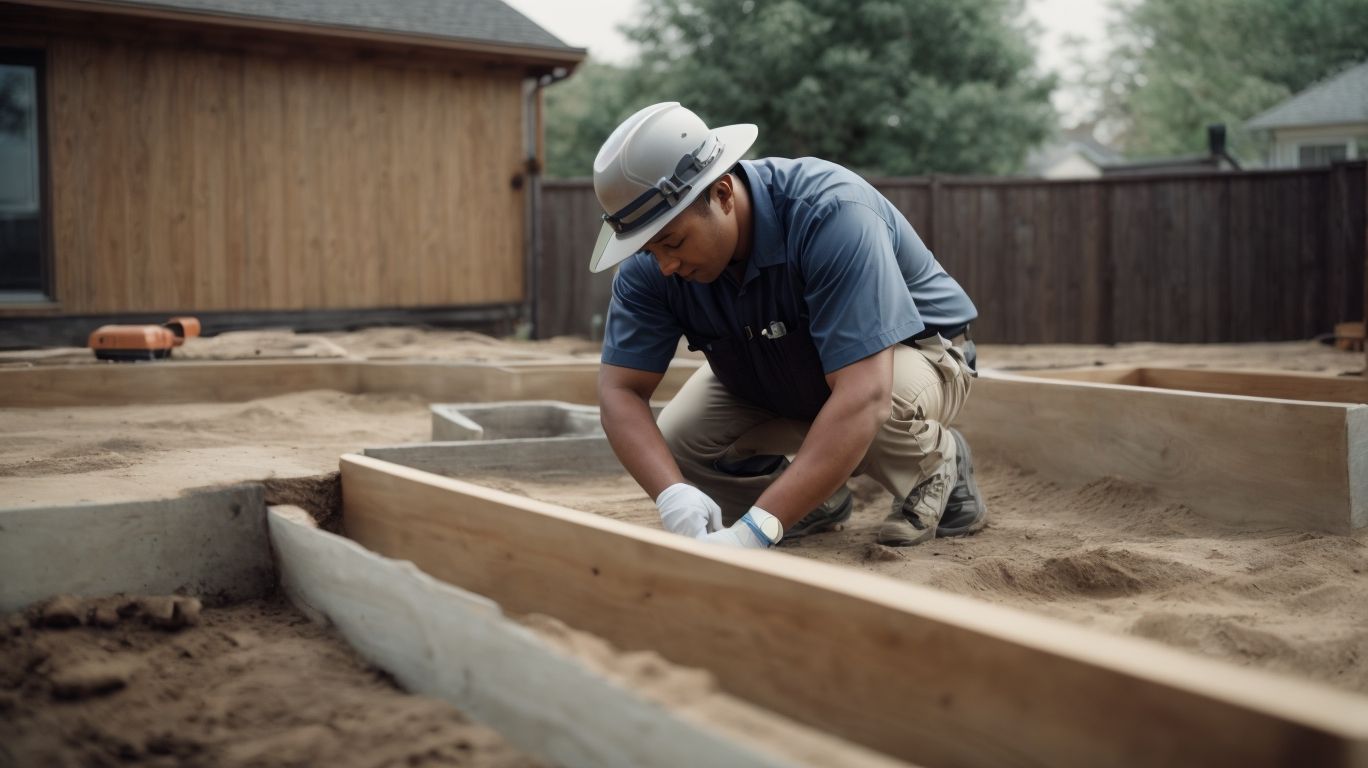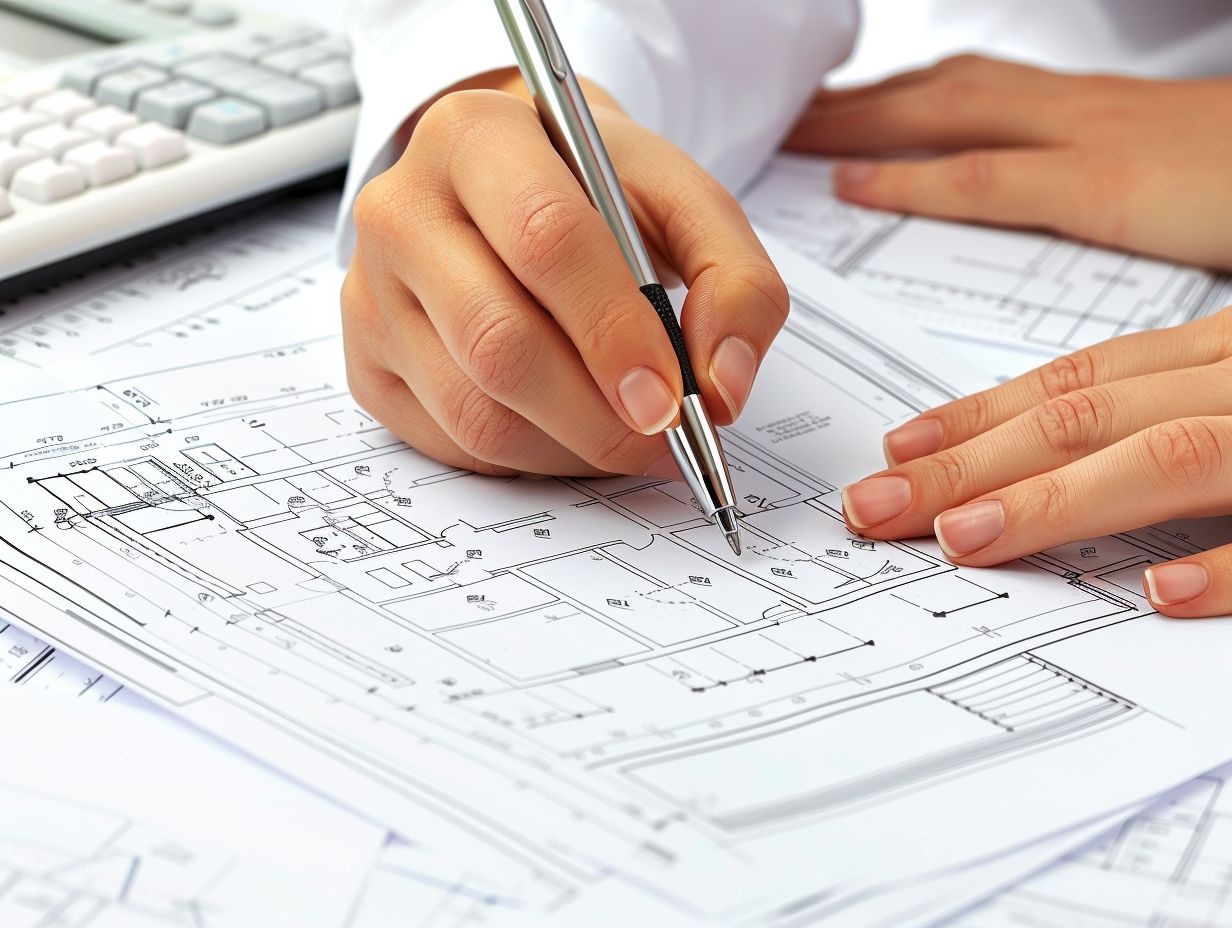
Essential Structural Inspections Before Your SF Home Makeover
Are you planning to give your San Francisco home a makeover? Before you embark on any renovation project, it’s crucial to prioritize structural inspections. These inspections are vital for identifying potential safety hazards, ensuring the structural integrity of your property, and assisting with planning and budgeting for any necessary repairs.
In this comprehensive guide, we’ll explore the different types of structural inspections, what to look for during these inspections, how to prepare for them, and what steps to take after the inspection. Whether it’s foundation, roof, electrical, plumbing, or HVAC inspections, understanding the process and being prepared will set the stage for a successful home renovation. Let’s dive into the world of structural inspections and ensure that your SF home makeover is off to a solid start.
What Are Structural Inspections?
Structural inspections are essential evaluations conducted to assess the stability, safety, and soundness of a property’s foundation, framing, roof, plumbing, and electrical systems in SF.
These inspections play a crucial role in identifying any potential issues that could compromise the integrity of the property. By thoroughly examining the structural components, professional inspectors can provide valuable insights into the condition of the property. This proactive approach can help in preventing costly repairs and ensuring the safety of occupants.
It also adds significant value to the property by ensuring that it meets the necessary structural standards and codes, offering peace of mind to both property owners and prospective buyers.
Why Are Structural Inspections Important Before a Home Makeover?
Before embarking on a home makeover, conducting structural inspections is crucial to ensure compliance, evaluate safety, and assess the structural soundness of the property.
These inspections play a vital role in the renovation process, as they help identify any underlying structural issues that need to be addressed before any remodeling or construction work begins, preventing potential hazards and ensuring that the project meets safety standards.
Structural inspections are essential for compliance with building codes and regulations, providing homeowners with the peace of mind that their property is being renovated in a safe and structurally sound manner. Prioritizing these inspections can ultimately save time and resources by addressing any structural concerns upfront.
Identifies Potential Safety Hazards
Structural inspections are imperative as they help identify and address potential safety hazards in the property, ensuring compliance with regulations and mitigating any structural deficiencies.
During these inspections, experts thoroughly assess the building’s structural integrity, looking for signs of deterioration, corrosion, or any other potential hazards. The assessment includes examining the foundation, walls, roof, and other structural components to determine any deficiencies or weaknesses that could pose a risk.
Once identified, a detailed risk assessment is carried out to prioritize and address structural concerns, ensuring the safety and stability of the property.
Ensures Structural Integrity
Structural inspections play a pivotal role in ensuring the structural integrity and stability of a property through professional assessment, involving a comprehensive evaluation of load-bearing walls, beams, columns, and trusses.
This meticulous process requires the expertise of structural engineers who meticulously scrutinize the building’s framework to identify any potential weaknesses or deviations from safety standards. By examining critical load-bearing components, they ensure that the structure can withstand expected loads and environmental conditions, safeguarding occupants and preserving the property’s value in the long term.
These assessments are instrumental in identifying any necessary repairs or maintenance, ultimately contributing to the overall safety and longevity of the building.”
Helps with Planning and Budgeting
Structural inspections aid in effective planning and budgeting for property improvements, whether it involves retrofitting, remodeling, redesign, or general maintenance, allowing for proactive measures to enhance property value.
These inspections serve as a critical step in understanding the structural integrity of a property, identifying potential issues early on, and making informed decisions about necessary upgrades. By conducting thorough inspections, property owners can develop a comprehensive understanding of the maintenance needs, prioritize areas for improvement, and allocate resources efficiently.
These assessments offer valuable insights for potential remodeling projects, helping property owners envision and execute designs that enhance the overall functionality and aesthetics of their property.
What Are the Different Types of Structural Inspections?
Structural inspections encompass various types that include:
- foundation
- roof
- electrical
- plumbing
- HVAC
each focusing on specific components crucial to property stability and safety.
These inspections play a vital role in identifying potential issues that may compromise the integrity of a property. Foundation inspections assess the stability of the building’s base, while roof inspections evaluate the condition and structural soundness of the roof.
Electrical, plumbing, and HVAC inspections ensure that these essential systems are functioning optimally and are up to safety standards. By addressing these specific components, structural inspections help homeowners and property buyers make informed decisions and maintain the structural integrity of their properties.
Foundation Inspection
Foundation inspections are essential for assessing the stability and structural integrity of a property’s foundation, providing valuable insights for contractors and renovation projects while ensuring compliance with regulations.
They play a crucial role in identifying any potential issues that may compromise the safety and durability of a structure, allowing for preemptive measures to be taken. In renovation projects, foundation inspections help in making informed decisions about the scope of work required, ensuring that the underlying structure can support the planned enhancements.
Compliance with structural standards is vital for meeting building codes and regulations, ensuring the safety and longevity of the entire property.
Roof Inspection
Roof inspections are crucial for evaluating the condition of the roof, identifying necessary upgrades, ensuring safety, and enhancing property value while adhering to compliance standards.
They provide an opportunity to identify potential safety hazards such as loose or damaged shingles, leaks, or structural weaknesses. Addressing these issues promptly can prevent accidents and property damage.
Regular inspections can add to the overall property value by ensuring that the roof is well-maintained and structurally sound. By staying proactive with inspections, homeowners can avoid costly surprises and uphold compliance with building codes and regulations, ensuring the long-term integrity of their property.
Electrical Inspection
Electrical inspections focus on identifying deficiencies, making recommendations for repair and improvement, and ensuring compliance with safety and regulatory standards, enhancing property safety and functionality.
These inspections are essential for safeguarding against electrical hazards, potential fire risks, and ensuring the optimal performance of electrical systems. By assessing the condition of wiring, circuits, outlets, and appliances, inspectors provide valuable insights to address any potential dangers or inefficiencies.
Proactive electrical inspections aid in maintaining compliance with industry regulations, reducing liability, and preserving the value of the property. Through thorough assessments and tailored repair recommendations, property owners can address issues promptly, minimize safety risks, and ensure the smooth functioning of their electrical infrastructure.
Plumbing Inspection
Plumbing inspections play a crucial role in identifying leaks, clogs, and maintenance needs, providing valuable insights for contractors and property assessment to ensure optimal plumbing functionality.
Regular inspections can detect hidden issues such as deteriorating pipes, water pressure irregularities, or drainage problems, preventing potential damage and costly repairs. In addition, these inspections contribute to the overall maintenance of the property, ensuring that the plumbing system remains efficient and reliable.
As part of property assessments, thorough plumbing inspections also help in evaluating the condition of the plumbing infrastructure, influencing decisions regarding repairs or replacements. They are essential for ensuring that contractors and maintenance personnel have a comprehensive understanding of the plumbing requirements, facilitating targeted and effective maintenance strategies.
HVAC Inspection
HVAC inspections are essential for identifying potential upgrades, maintenance requirements, and ensuring compliance with property assessment, contributing to improved structural and functional aspects of HVAC systems.
They play a critical role in safeguarding the efficiency and longevity of HVAC systems, which directly impacts the comfort and safety of occupants. Regular inspections help detect and address issues early, preventing costly repairs and potential breakdowns.
Staying updated with maintenance and compliance requirements not only ensures optimal performance but also enhances energy efficiency, reducing operational costs and environmental impact. Property owners are advised to prioritize scheduling regular HVAC inspections to uphold the standards of safety and functionality within their buildings.
What Should You Look for During a Structural Inspection?
During a structural inspection, it is essential to look for indications of cracks or damage in the foundation, signs of water damage, outdated or faulty electrical systems, leaks or clogs in plumbing, and malfunctioning HVAC systems.
These specific aspects can reveal important insights about the structural integrity of a property. A thorough examination of the foundation can uncover issues such as settlement or shifting, which may indicate potential structural instability. Assessing the electrical systems for outdated wiring or faulty components is crucial to ensure safety and compliance with current regulations.
Plumbing inspections should focus on identifying leaks, clogs, or corrosion that could lead to water damage or compromised water supply. Evaluating the HVAC systems is vital to detect any inefficiencies, defects, or safety hazards that may impact indoor air quality and comfort.
Cracks or Damage in Foundation
During a structural inspection, it is crucial to assess the foundation for any signs of cracks or damage, evaluating their impact on structural stability and recommending necessary repairs or improvements.
This evaluation involves thorough examination of the type, size, and location of the cracks to determine the level of structural compromise. Understanding the underlying causes of the cracks, such as soil settlement or excessive moisture, is essential for effective repair recommendations.
Assessing the overall stability of the foundation, including its alignment and support, is critical in ensuring the long-term integrity of the structure. By considering these factors, inspectors can provide valuable insights for homeowners or property buyers, guiding them on the best course of action for addressing foundation issues.
Signs of Water Damage
While conducting a structural inspection, it is important to identify and address any signs of water damage, emphasizing the need for preventive measures, maintenance, and potential renovation to mitigate water-related issues.
This includes thoroughly examining areas prone to water intrusion such as basements, crawl spaces, and around windows and doors. Prevention measures may involve repairing any leaks, improving drainage systems, and ensuring proper ventilation.
Regular maintenance, such as cleaning gutters and checking for plumbing leaks, is crucial to avoid potential damage. In some cases, extensive water damage may necessitate renovation work to restore the integrity of the structure and prevent further deterioration.
Outdated or Faulty Electrical Systems
During a structural inspection, it is essential to evaluate electrical systems for any indications of being outdated or faulty, ensuring safety, addressing deficiencies, and planning necessary upgrades to comply with regulatory standards.
This assessment is crucial in preventing potential fire hazards, electrocution, or other safety risks. Identifying any deficiencies in the electrical systems can lead to the implementation of corrective measures, such as rewiring, panel upgrades, or installing additional safety devices.
Compliance with industry standards and building codes is a critical aspect to ensure the protection of occupants and property. Therefore, highlighting the importance of regular inspections and prompt action to rectify any electrical issues cannot be overstated.
Leaks or Clogs in Plumbing
During a structural inspection, it is vital to identify and address any leaks or clogs in the plumbing systems, highlighting the importance of maintenance and assessment to ensure optimal plumbing functionality.
Inspectors meticulously examine water supply lines, drainage systems, and fixtures to detect leaks and blockages. Regular maintenance can prevent potential costly issues, such as pipe corrosion or sewer line backups. Thorough assessment allows for proactive measures, like identifying areas prone to leaks and recommending appropriate repairs or replacements.
Such attention to plumbing details not only ensures safe and efficient water flow but also contributes to the overall integrity of the property.
Malfunctioning HVAC Systems
During a structural inspection, it is crucial to identify any signs of malfunctioning in HVAC systems, emphasizing the need for upgrades, maintenance, and assessment to ensure optimal functionality and performance.
This involves a comprehensive evaluation of the HVAC components, such as air filters, ductwork, thermostats, and refrigerant levels. Identifying issues like leaks, poor ventilation, or inefficient heating and cooling units is vital for maintaining a comfortable indoor environment and energy efficiency.
Assessing the overall age and condition of the system helps in determining if upgrades or replacements are necessary to meet current regulatory standards and improve system reliability.
How Can You Prepare for a Structural Inspection?
Preparing for a structural inspection involves:
- Gathering necessary documents, ensuring clear access to all areas of the home, and making a list of questions for the inspector to address property concerns and assessments thoroughly.
It is essential to have documents such as construction permits, property survey records, and any recent inspection reports ready for the inspector. Ensuring that all areas of the home, including crawl spaces and attic, are easily accessible will aid in a comprehensive inspection.
Formulating questions about potential structural issues, the condition of the foundation, and the integrity of load-bearing elements will allow the inspector to focus on specific areas of concern during the assessment.
Gather Necessary Documents
Prior to a structural inspection, it is essential to gather necessary documents such as property assessment records, permits, and compliance documentation to facilitate a comprehensive evaluation of the property.
These documents play a crucial role in providing insight into the history and legal standing of the property, enabling inspectors to assess its structural integrity and adherence to building codes. Property assessment records offer valuable information about previous appraisals, renovations, and property boundaries.
Permits indicate the authorization for specific construction or renovation work, while compliance documentation ensures that the property meets regulatory standards. Without these essential documents, the inspection process could be hindered, potentially leading to incomplete assessments and delays in property transactions.
Clear Access to All Areas of the Home
Ensuring clear access to all areas of the home is vital for a thorough structural inspection, allowing for comprehensive property assessment and ensuring the safety and integrity of the evaluation process.
It is crucial for inspectors to have unobstructed pathways to all areas within the property to accurately assess the condition of the structure, plumbing, electrical systems, and other essential components. Clear access not only facilitates a more thorough evaluation of the property’s overall safety and functionality but also ensures that potential issues are identified and addressed in a timely manner. Without clear access, the evaluation process may be compromised, leading to incomplete assessments and potentially overlooking critical aspects that could impact the property’s long-term integrity.
Make a List of Questions for the Inspector
Preparing a list of questions for the inspector is essential to address specific property concerns and ensure a thorough assessment process during the structural inspection.
It allows homeowners to gain clarity on any issues, understand potential repairs or maintenance needs, and even uncover unnoticed aspects of the property. By preparing questions in advance, it also demonstrates a proactive approach to property maintenance and enhances communication with the inspector. This proactive engagement can lead to a more transparent and informative inspection, fostering better decision-making for the property’s future.
Asking insightful questions can aid in building a good rapport with the inspector, potentially paving the way for a more collaborative and comprehensive evaluation.
What Should You Do After the Structural Inspection?
After a structural inspection, it is crucial to review the inspection report, address any identified issues, and plan and budget for necessary repairs or improvements to enhance the property’s safety and stability.
This process begins with thoroughly going through the inspection report with the assistance of a qualified professional to understand the findings and their implications. Aspects such as foundation integrity, electrical and plumbing systems, and the overall structural stability need to be carefully assessed.
Once the key issues are identified, a plan for addressing them should be formulated, considering the urgency and impact on the property’s functionality and safety. Proper budgeting is essential for prioritizing repairs and improvements effectively.
Review the Inspection Report
Upon completion of a structural inspection, it is essential to thoroughly review the inspection report, assess recommendations, and address any identified deficiencies, planning for necessary repairs and improvements.
This critical process ensures that any potential issues or safety concerns are identified and promptly addressed, protecting the integrity and safety of the structure. By carefully evaluating the recommendations provided in the inspection report, one can prioritize the necessary actions to improve the structure’s overall performance and longevity.
The identification of deficiencies allows for targeted planning of repair and improvement initiatives, ensuring that resources are allocated efficiently and effectively to address the identified issues. Taking these steps is crucial for maintaining the structural integrity and functionality of the building.
Address Any Issues Found
Following a structural inspection, it is imperative to address any issues found, prioritize maintenance and repair tasks, and ensure compliance with safety and regulatory standards for enhanced property functionality and safety.
This involves conducting a thorough assessment of the inspection report to identify critical areas that need attention. By promptly addressing these issues, property owners can prevent minor problems from escalating into major structural issues, thereby avoiding costly repairs and ensuring the safety of occupants.
Prioritizing maintenance and repair tasks enables efficient resource allocation, maximizing the lifespan of the property. Complying with safety standards is essential to mitigate potential risks and liabilities, fostering a secure environment for residents and visitors.
Plan and Budget for Necessary Repairs
After a structural inspection, it is essential to plan and budget for necessary repairs or upgrades, considering their impact on property value and ensuring the longevity and stability of the property.
This process involves assessing the inspection report to prioritize crucial repairs and allocating funds accordingly. Upgrades, such as modernizing the HVAC system or renovating the kitchen, can significantly enhance the property’s appeal and value. It’s vital to consider the return on investment for these upgrades, weighing the costs against potential long-term benefits.
By carefully planning and budgeting for these improvements, property owners can ensure that their investment remains competitive in the real estate market and maintains its overall quality and desirability.




No Comments